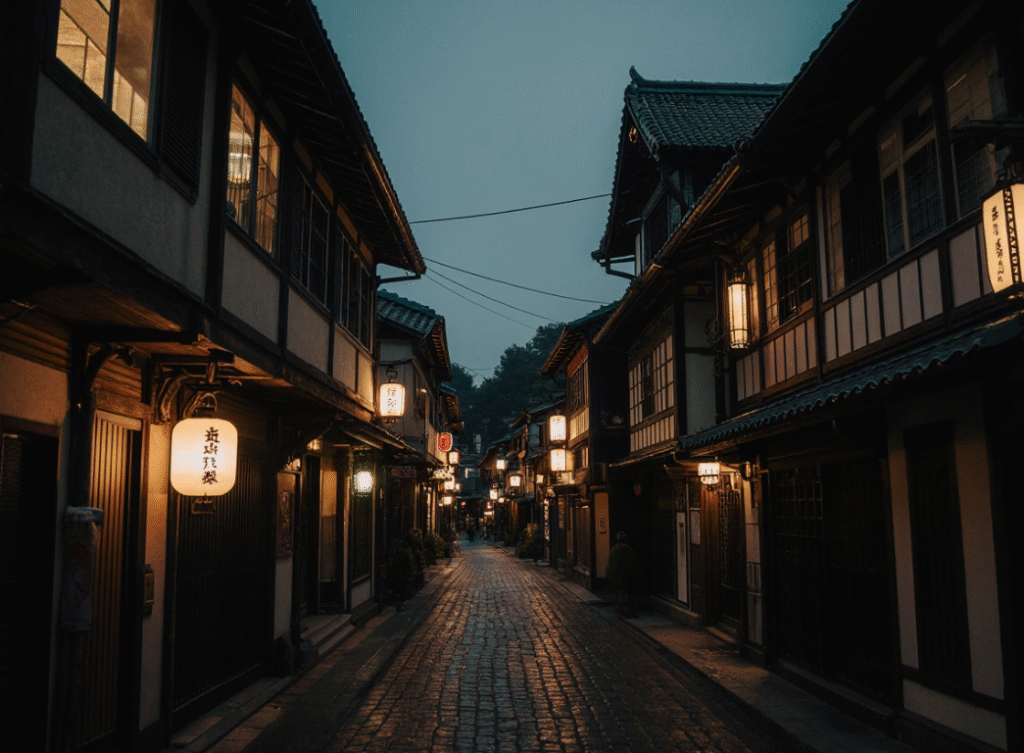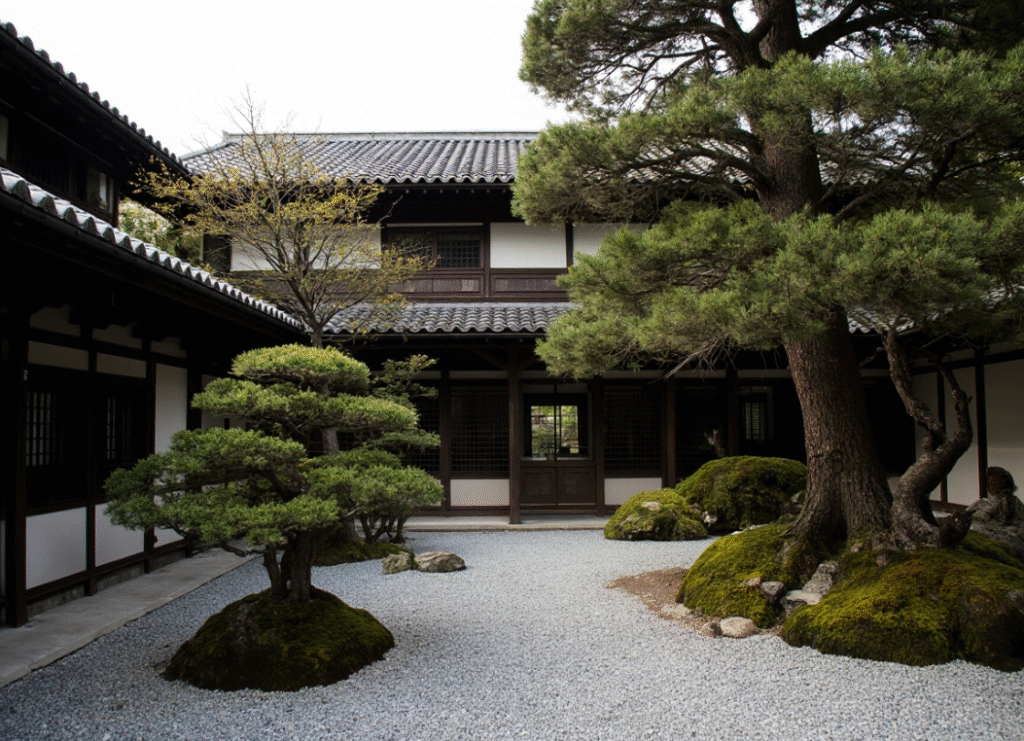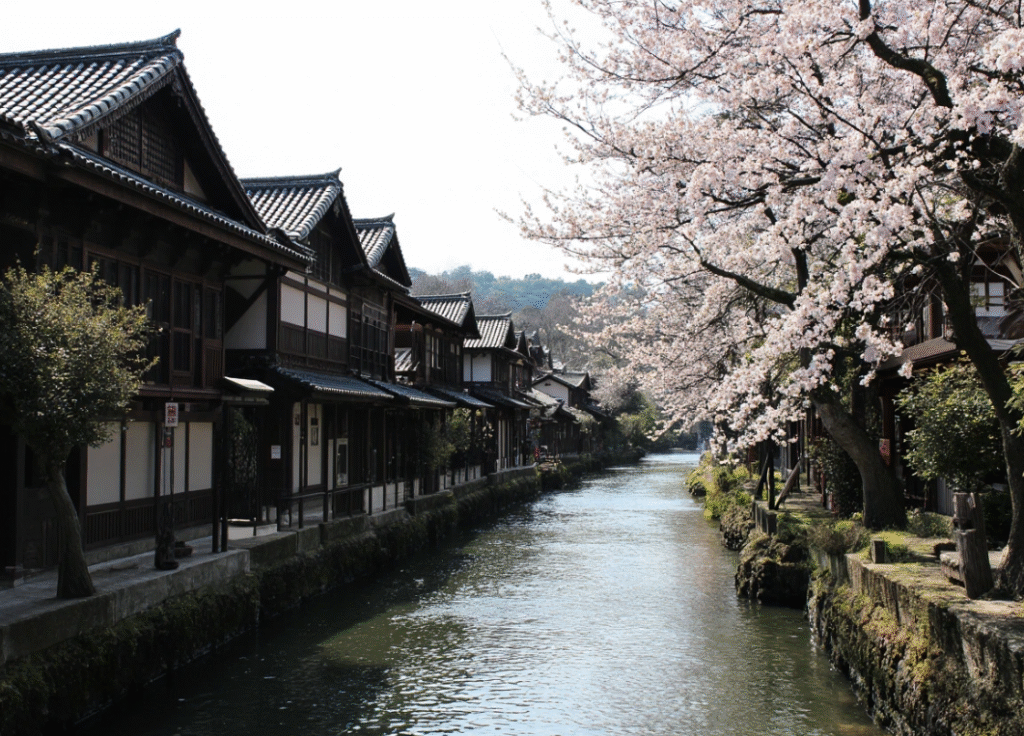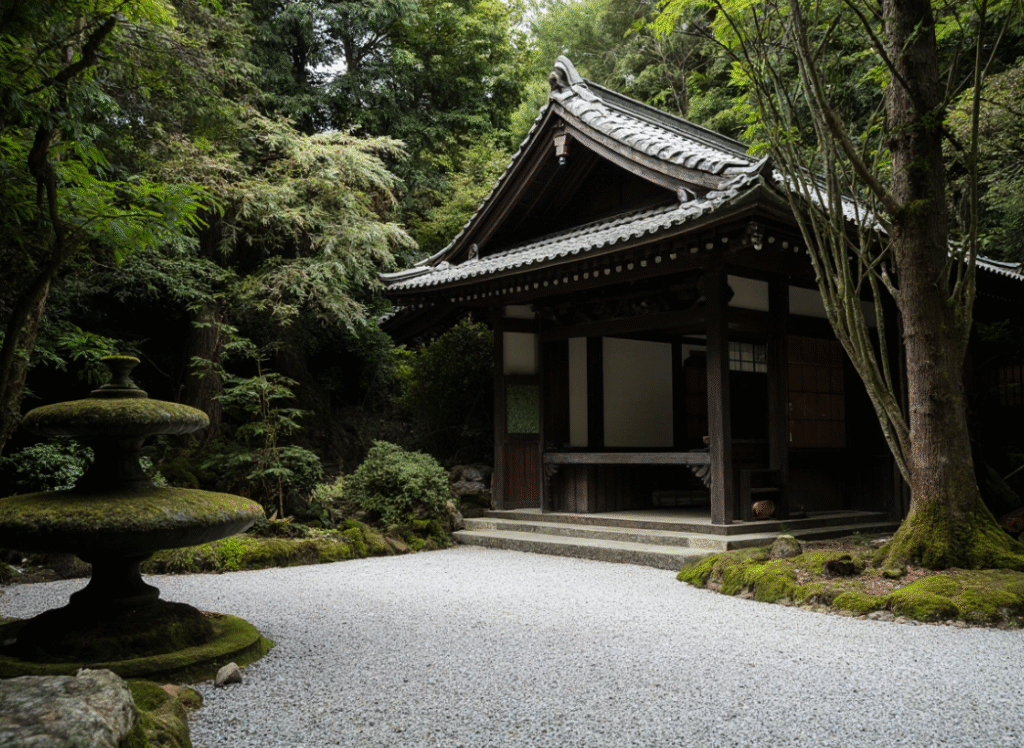Picture this: You’re standing on the western bank of the Kamogawa River, where a narrow alley barely wider than two people walking side by side stretches before you. Traditional wooden buildings press close on either side, their paper lanterns swaying gently in the evening breeze. This is Pontocho, and exploring nearby attractions isn’t just convenient—it’s the beating heart of Kyoto’s cultural center.
More about Pontocho:
Where Is Pontocho and Why Nearby Attractions Matter?
Pontocho runs parallel to the Kamo River’s western bank, stretching from Shijo-dori to Sanjo-dori. This 500-meter pedestrian alley sits in downtown Kyoto, making it one of the most accessible cultural districts for travelers staying anywhere in the city.
Understanding Pontocho nearby attractions matters because this atmospheric lane acts as a natural bridge between Kyoto’s must-see sights. Cross the Shijo Bridge eastward, and you’re in the famous Gion Hanamachi within five minutes. Walk west for ten minutes, and you’ll hit the bustling Nishiki Market. This isn’t just about convenience—it’s about experiencing Kyoto the way locals do, moving fluidly between traditional districts without wasting hours on transportation.
Think of this central position like a Swiss Army knife for your Kyoto trip. You can base your entire day around this single point, radiating outward to temples, markets, and cultural sites, then returning each evening for dinner with a view of the river. The district’s strategic location means you’re never more than a 20-minute walk or 10-minute train ride from major sights.
Getting to Pontocho: The Practical Details
From Kyoto Station, buses 4, 5, 17, or 205 take you to Shijo Kawaramachi stop, followed by a short walk. The bus ride takes 10-15 minutes and costs 230 yen. If you prefer trains, the nearest stations are Gion Shijo on the Keihan Line and Kyoto Kawaramachi on the Hankyu Line, both less than a five-minute walk away.

Here’s what most guidebooks won’t tell you: The bus can get packed during rush hour (5-7 PM) and cherry blossom season. During these times, the Hankyu Line from Kyoto Station to Kawaramachi Station takes five minutes and delivers you right into the action without the crowds.
When you exit at Shijo Kawaramachi or Gion Shijo stations, look for the Kamo River. The narrow alley runs along its western bank. You’ll spot the entrance by the traditional red lanterns bearing a white plover—the district’s symbol—hanging outside restaurants.
“Don’t make the rookie mistake of trying to find Pontocho at noon. Most restaurants don’t open until 5 PM, and the alley looks completely different—almost lifeless—during the day. The magic starts around sunset when the lanterns light up and the district transforms. Come after 5:30 PM for the full experience.”
How Pontocho Transformed from Trading Post to Cultural Hub
The alley was created in the 1670s by embankment works between the Kamo and Takase rivers. Back then, this was purely functional—a pathway for merchants and travelers using flat-bottomed boats to transport goods upstream. The area was muddy, utilitarian, and forgettable.
The first ochaya tea houses opened in 1712, and a century later, the street received an official license to become one of Kyoto’s hanamachi—a geisha district. This single administrative decision changed everything. What could have become a commercial shipping district instead evolved into a place of refined entertainment and culture.

Here’s the alternate history few consider: If Kyoto’s city planners in the 1800s had prioritized industrial expansion over cultural preservation, this historic lane might have become a warehouse district like the ports of Osaka. Instead, they doubled down on tradition, creating strict building codes that still exist today. No cars, modern buildings, or gaudy signs are allowed, preserving the Edo-period atmosphere that makes walking through this area feel like time travel.
This historical protection directly impacts your experience today. The buildings retain their traditional “eel bed” design—narrow fronts with deep interiors—because they’re designated cultural assets. When you dine here, you’re not just eating in a themed restaurant; you’re sitting in structures that have hosted travelers for over 300 years.
Things to Do Near Pontocho: Essential Attractions Guide
When planning things to do near Pontocho, you’ll discover an incredible concentration of Kyoto’s cultural treasures within walking distance. From ancient shrines to bustling markets, the area surrounding this historic dining alley offers everything a visitor could want.

Gion District: The Famous Neighbor Across the River
When comparing Pontocho and Gion, you’ll discover two distinct personalities. Gion lies less than a 10-minute walk away, right across the Kamogawa River. Cross Shijo Bridge heading east, and you enter Kyoto’s most famous geisha district, home to 70 geishas and 30 maikos working at 60 teahouses.
The relationship between these neighboring districts is like siblings with different personalities. Gion is the elegant, photograph-ready district where you spot geishas hurrying to appointments along Hanamikoji Street. The western alley is grittier, more intimate, with narrower passages and a neighborhood vibe. Most travelers visit Gion for photos and atmosphere, then return to the riverside dining area for dinner because the restaurants feel more accessible.
Your practical strategy: Start at the narrow alley around 5:30 PM, cross to Gion for early evening geisha spotting (they head to appointments between 6-7 PM), then return for dinner. This loop takes 90 minutes and covers Kyoto’s two main geisha districts efficiently.
Many visitors ask “Is Pontocho in Gion?” The answer is no—they’re separate hanamachi districts, though closely connected by geography and culture.
Nishiki Market: Kyoto’s Kitchen 10 Minutes West
If you’re wondering how far is Pontocho from Nishiki Market, the answer is pleasantly close. The market sits just one street north of Shijo Avenue, a 5-10 minute walk from the riverside dining alley. This 400-meter covered market has been feeding Kyoto for over 700 years, with over one hundred restaurants and shops, some operated by the same families for multiple generations.
- The walking route is dead simple: From the southern entrance at Shijo-dori, walk west on Shijo for five minutes. Turn right at Teramachi Street, walk one block north, and you’ll see the market’s entrance.
- Here’s the strategic approach most travelers miss: Visit the food market in the morning (9-11 AM) when the crowds are thinner and stall owners are more willing to chat. Pick up snacks and local specialties. Store purchases at your hotel or in a coin locker. Then return to the dining district in the evening for dinner. Trying to do both in one evening rush creates crowds and stress.
The market sells everything from tsukemono (pickles) to fresh seafood, Kyoto vegetables, and traditional sweets. While eating in the street is generally considered poor manners in Japan, the practice is accepted here. Try the sesame dumplings, senbei rice crackers, or fresh grilled seafood on skewers.
Yasaka Shrine: The Spiritual Gateway
For those planning their Kyoto itinerary, Pontocho visits should connect seamlessly with sacred sites. Yasaka Shrine sits 5-10 minutes walking distance, depending on your pace and which entrance you use. Founded over 1,350 years ago, the shrine sits between Gion and Higashiyama districts, making it a natural stop on your riverside-to-Gion walk.
The Pontocho to Yasaka Shrine walking time is brief but rewarding. The shrine’s vermillion gate is hard to miss—it’s one of Kyoto’s most photographed landmarks. Inside, you’ll find a main hall combining the inner sanctuary and offering hall into a single building, with a dance stage featuring hundreds of lanterns that light up in the evenings.
The shrine hosts the Gion Matsuri every July, arguably the most famous festival in Japan, dating back over a thousand years with a procession featuring massive floats and hundreds of participants. During cherry blossom season around early April, the adjacent Maruyama Park becomes one of Kyoto’s most popular hanami (flower viewing) spots.
The tactical approach: Visit the shrine in the early evening (5-6 PM) when the lanterns begin lighting up but before the dinner crowds arrive. Spend 20-30 minutes exploring the grounds, then walk through Maruyama Park behind the shrine. This route naturally leads you either back to the dining alley for dinner or deeper into Higashiyama for more temple exploration.
Kiyomizu-dera: The Hilltop Temple Worth the Climb
Kiyomizu-dera sits about 20 minutes walking from the riverside district, mostly uphill. The temple sits atop a small mountain on the east side of Kyoto, with its famous wooden stage built 13 meters above the ground without using nails.
- The walk is part of the experience. Two streets named Ninenzaka and Sannenzaka lead to Kiyomizudera from Gion, lined with shops specializing in souvenirs and snacks. The narrow pedestrian lanes and traditional architecture make the 20-minute uphill walk feel more like a journey through old Kyoto than exercise.
- Here’s the timing strategy: Kiyomizu-dera opens at 6 AM daily. If you’re serious about photography or hate crowds, visit at opening time. By 9 AM, tour buses arrive and the temple becomes packed. Entry costs 400 yen.
- After exploring Kiyomizu-dera, walk back down through Ninenzaka and Sannenzaka, stop at Yasaka Shrine, cut through Gion, and end at the dining alley for lunch at one of the few restaurants open during the day. This creates a natural morning-to-afternoon loop that covers three major attractions without backtracking.
Pontocho and Kamogawa River: The Natural Extension
The Kamogawa River itself functions as an attraction, not just a landmark. During summer months from May to September, restaurants on the eastern side set up kawayuka—outdoor platforms over the water—allowing diners to experience the cool breeze and lively summer atmosphere.
Locals treat the river’s banks like a public park. On any evening, you’ll see couples on dates, students studying, and groups picnicking on the wide stone embankments. The river creates a natural break between the western dining alley and Gion, offering breathing room and perspective in a dense city.
Your practical use: The river path makes an excellent jogging route if you’re staying nearby. It’s also perfect for a post-dinner stroll to walk off a heavy kaiseki meal. Walk north along the river, and you’ll find progressively quieter, more residential sections of Kyoto.
Pontocho Nearby Attractions: Complete Distance Guide
Before diving into specific sights, here’s a quick reference for planning your route among Pontocho nearby attractions:
- Gion District: 5 minutes walk (300 meters)
- Nishiki Market: 10 minutes walk (700 meters)
- Yasaka Shrine: 10 minutes walk (800 meters)
- Kiyomizu-dera Temple: 20 minutes walk (1.5 kilometers)
- Kamogawa River: Adjacent (0 minutes)
- Kiyamachi-dori: Adjacent (parallel street)
This compact geography makes it possible to visit multiple landmarks in a single day without exhausting yourself.
| District | Walking Distance | Best Known For | Atmosphere | Restaurant Accessibility |
| Gion | 5 minutes | Geisha culture, Hanamikoji Street, traditional teahouses | Elegant, photo-ready, tourist-focused | Many exclusive teahouses closed to foreigners, but growing number of accessible restaurants |
| Riverside Dining Alley | — | Riverside dining, intimate alley atmosphere, local izakayas | Narrow, atmospheric, neighborhood vibe | Most restaurants welcome foreigners, English menus increasingly common |
| Food Market | 10 minutes | Food market, local ingredients, street food | Bustling, market energy, daytime focused | Mostly stalls and casual dining, very accessible |
The Most Common Mistakes When Visiting Pontocho Nearby Attractions
Understanding these pitfalls helps you maximize your time exploring the area and its surroundings.
Mistake 1: Visiting During the Day
You see the dining district mentioned in your guidebook, arrive at 2 PM, and find a sleepy alley with closed restaurants and little activity. You think, “What’s the big deal?”
- Why travelers do this: Guidebooks show daytime photos because they photograph better. The narrow alley and overhanging buildings create deep shadows at night, making photography challenging. So publications use day shots, creating false expectations.
- The cost of this mistake: You waste 30-60 minutes in a district that’s essentially closed, then miss the magical evening transformation when lanterns light up and the alley comes alive. The contrast between day and night is dramatic—you’re essentially seeing 20% of the experience.
Worse, you might decide to skip it entirely, thinking it’s overrated. Then you miss one of Kyoto’s best dining experiences. The damage: Lost time, missed atmosphere, and a dinner elsewhere that’s less memorable. In monetary terms, if you end up eating at a generic restaurant near Kyoto Station instead, you’re probably paying similar prices for inferior food and zero atmosphere—a $40-60 mistake per person.
Mistake 2: Not Making Dinner Reservations on Weekends
You walk into the dining alley on a Friday night at 7 PM, thinking you’ll just pick a restaurant that looks good. Every restaurant you approach is either full or has a 90-minute wait. You end up at the only place with availability—a mediocre tourist trap that speaks English but serves subpar food at inflated prices.
- Why travelers do this: In many Western cities, you can walk into good restaurants on weekends without reservations. Plus, the narrow alley and numerous options create a false sense that something will be available.
- The cost of this mistake: Friday and Saturday nights are when locals and savvy tourists come to dine. Advance dinner reservations are recommended on Fridays and Saturdays, especially for better establishments. Without reservations, you’re left with either subpar restaurants or a long wait.
- The practical damage: You waste 60-90 minutes wandering and getting rejected, your dining group gets hangry and frustrated, and you ultimately settle for a meal that costs $30-50 per person but delivers maybe $15-20 worth of quality. Multiply that by your group size and you’ve lost $100+ plus your evening’s momentum. The missed opportunity—a carefully selected kaiseki dinner in an atmospheric machiya with a river view—can’t be recovered.
Mistake 3: Trying to Walk in Heels or Uncomfortable Shoes
You’re dressed nicely for dinner, wearing dress shoes or heels because you want to look good for the evening. The alley’s uneven stone pavement, unexpected stairs between buildings, and the 15-minute uphill walk from Gion Shijo station leave you with blisters and foot pain by dessert.
- Why travelers do this: Restaurants photograph beautifully, especially the upscale kaiseki establishments. Travelers want to dress appropriately for these settings and don’t realize how much walking is involved in Kyoto’s traditional districts.
- The cost of this mistake: Immediate physical discomfort that ruins your dinner experience. You’re focused on your painful feet instead of the food. The broader impact is worse: Your painful feet limit your willingness to explore after dinner. Walking through Gion at night or strolling along the river gets cut short. You end up taking a taxi back to your hotel instead of experiencing the evening atmosphere.
In practical terms, painful feet can derail your entire next day. If you planned an active day visiting temples and walking through Higashiyama, you now need to modify plans, take more taxis, or skip attractions entirely. The cumulative cost across a 3-4 day Kyoto trip could mean missing 20-30% of walking-based experiences, plus $50-80 in additional taxi fees to compensate for reduced mobility.
The fix: Bring stylish but comfortable walking shoes with good support. Kyoto locals who dine in the area dress nicely but practically—you’ll see women in elegant flats, not heels. Many travelers keep a pair of nicer shoes in their day bag and change before dinner, but honestly, good walking shoes are perfectly acceptable at most restaurants.
“I’ve guided over 500 Kyoto tours, and the single biggest pattern I see is travelers underestimating walking distances. They see ‘five minutes’ and think of a flat, straight path. But Kyoto’s five minutes often includes crossing bridges, navigating stairs, or walking uphill. My advice: Add 30% to all estimated walking times, and always wear comfortable shoes. Your feet are your primary transportation in Kyoto—treat them well.”
When to Visit: A Reality Check on Timing
The dining district looks stunning in cherry blossom season (late March to early April) and autumn foliage season (mid-November). But here’s what tour operators won’t tell you: These are also when the area is most crowded and expensive.
During peak seasons, the narrow alley becomes shoulder-to-shoulder packed between 6-9 PM. Restaurant prices increase 10-20%, and many require reservations weeks in advance. If you’re traveling during these times, either book everything before you leave home or shift your dinner to off-hours (5-5:30 PM or after 9 PM).

The best time to visit is actually late September through early November (before peak foliage) or May through June. Weather is pleasant, crowds are manageable, and restaurants are more flexible with walk-ins. The summer months (July-August) offer a unique experience with the kawayuka platforms, though humidity can be intense.
Winter (January-February) is underrated. Yes, it’s cold, but you’ll have the alley almost to yourself, and the bare trees along the river create stark, beautiful scenery. Many restaurants offer winter specials like nabe (hot pot) that aren’t available other times of year.
The Honest Truth About Drawbacks
Before you add this dining district to every evening of your itinerary, understand its limitations.
- For budget travelers: The area skews expensive. While you can find yakitori spots under $20 per person, most proper dinner experiences run $40-80+ per person. If you’re on a tight budget, treat it as a once-per-trip splurge, not a nightly routine. There are much cheaper dinner options in areas like Teramachi or near Kyoto Station.
- For travelers who need space: The narrow alley and intimate restaurants aren’t ideal if you have claustrophobia or need wheelchair accessibility. Many traditional buildings have stairs, narrow doorways, and low ceilings. If mobility is an issue, research specific restaurants in advance—some modern establishments offer better accessibility.
- For large groups: Most restaurants are tiny, seating 10-20 people total. If you’re traveling with a group of six or more, finding a restaurant that can accommodate you without advance reservation is nearly impossible. Even with reservations, many places can’t handle groups larger than eight.
- For travelers seeking authenticity over atmosphere: Some locals argue that the district has become too tourist-focused, especially the southern section near Shijo. If you want the “real” Kyoto dining experience, they’d point you to neighborhoods like Nishijin or Rakuhoku. This riverside alley offers atmosphere and convenience, but it’s not undiscovered—accept it as a beautifully preserved tourist district, not an off-the-beaten-path secret.
- For families with young children: The evening-focused timing and restaurant culture (quiet, refined, multi-course meals) doesn’t suit families with small kids who need to eat early and can’t sit through two-hour dinners. If you’re traveling with children under 10, consider visiting for a late afternoon walk and early dinner (5-6 PM) at a more casual spot, rather than the traditional evening experience.
How to Walk from Pontocho to Gion: Building Your Day Plan
Here’s a practical one-day itinerary using the riverside district as your hub:
- 9:00 AM – Breakfast at your hotel or near Kyoto Station
- 9:30 AM – Take the bus or train to Shijo Kawaramachi
- 10:00 AM – Explore the covered food market, sample street food, buy snacks
- 12:00 PM – Lunch at the market or walk to the dining alley (a few restaurants open for lunch)
- 1:30 PM – Walk to the sacred shrine via Shijo Bridge and Gion
- 2:30 PM – Continue to Kiyomizu-dera Temple (arrive by 3 PM)
- 4:30 PM – Walk down through Ninenzaka and Sannenzaka
- 5:30 PM – Return to the riverside for pre-dinner drink or river walk
- 6:30 PM – Dinner at reserved restaurant
- 8:30 PM – Evening stroll through Gion or along the river
This plan covers five major attractions, builds in rest time, and ends with the highlight—dinner. The walking distance totals about 5-6 kilometers (3-4 miles), very manageable with good shoes and a moderate pace.
Pontocho Area Map: Navigating Beyond the Tourist Trail
Having a mental map of Pontocho nearby attractions helps you navigate efficiently. The district sits in a rectangle bounded by Shijo-dori to the south, Sanjo-dori to the north, Kiyamachi-dori to the west, and the Kamogawa River to the east.
Nearby Temples to Pontocho and Lesser-Known Spots
- Shirakawa Canal (8 minutes walk): Just north of Gion’s main tourist area, this canal lined with willow trees offers traditional machiya restaurants and ochaya with fewer crowds. Walk along the canal at dusk for some of Kyoto’s most romantic scenery.
- Kennin-ji Temple (10 minutes walk): Kyoto’s oldest Zen temple sits at the southern end of Gion. The temple’s rock gardens and painted screens offer a quiet contrast to the busy districts nearby. Entry costs 600 yen, and you’ll often have the gardens nearby.
- Kiyamachi-dori (Adjacent): Running parallel to the main dining alley along the Takase Canal, Kiyamachi-dori offers a similar atmosphere with slightly more bars than restaurants. It’s where locals go when the main alley feels too crowded. The cherry trees along the canal create a stunning canopy during bloom season.
- Theater (On the Alley): Every May, the theater hosts Kamogawa Odori dances featuring geisha and maiko in lavish costumes. If you’re in Kyoto during May, tickets for these performances offer one of the few chances to see geisha entertainment without private connections. Tickets range from 2,500-5,500 yen.
Starting Point for Kyoto Day Trip: Why Pontocho Works
The riverside dining district’s location makes it more than just a culinary destination—it’s a strategic base for exploring Kyoto. Within a 20-minute walk, you can reach Gion, the food market, the sacred shrine, and the starting point for walks to Kiyomizu-dera and Higashiyama. This concentration of Pontocho nearby attractions creates an ideal hub for day-trippers and multi-day visitors alike.
The question isn’t whether to include this atmospheric alley in your itinerary—it’s how to maximize it. Use it as your evening anchor point. Spend your days exploring temples and markets, then return each evening to decompress over dinner with a river view. This approach gives structure to your trip while keeping you central to the action.

For first-time Kyoto visitors, I’d rank the location value at 9/10. The only reason it’s not perfect is the evening-only timing—if more restaurants opened for lunch, it would be an ideal all-day hub. As it stands, you’ll use the district primarily for evening experiences while spending mornings and afternoons elsewhere.
The location also means you can spontaneously adjust plans. If a temple visit takes longer than expected or you’re tired from walking, you’re never far from the dining district. That flexibility—rare in a city as spread out as Kyoto—makes this central location invaluable for maintaining travel momentum without exhaustion.
Whether you’re planning a tight three-day Kyoto sprint or a leisurely week-long exploration, the riverside dining alley’s location offers the rare combination of cultural depth, practical accessibility, and atmospheric dining that justifies returning night after night—something few other districts can claim.
